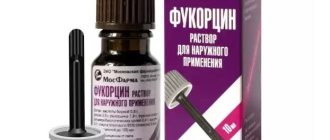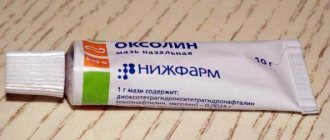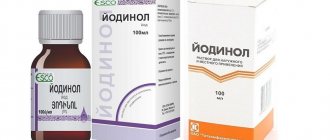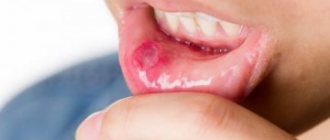You always want to cure stomatitis as quickly as possible, because mouth ulcers cause severe pain and make it difficult to eat. Often, for the treatment of stomatitis, doctors prescribe not the advertised expensive drugs, but the well-known Fukortsin. Can such a cheap drug really be a worthy alternative to expensive drugs and how quickly can it help?
Fukortsin for stomatitis
What is Fukortsin used for?
The pronounced antimicrobial effect allows Fukortsin to be used as a local antiseptic that fights potential infection of wounds and abrasions. In addition, the drug has a fungicidal effect, which means it can prevent the proliferation of fungus. The main purposes of Fukortsin are:
- purulent wounds;
- superficial damage to the skin;
- erosion;
- abrasion;
- deep cracks;
- fungal infection of the epidermis.
Diagnosed streptoderma is treated with the timely use of Fukortsin.
A drug that can fight stomatitis!
Fukortsin solution is often prescribed for the treatment of stomatitis in adults and children over one year of age. The product has a pronounced complex effect, dries well, eliminates fungal and bacterial infections, and reduces the likelihood of re-infection.
The solution is prescribed for the treatment of stomatitis, as well as herpes. In the latter case, characteristic crimson spots appear on exposed areas of the skin; in such situations, the product is often used in pediatrics.
The peculiarity of the medicine is that the solution is effective in treating all types of stomatitis. For candidiasis (children most often suffer from it), it is important to use a raspberry-colored solution. It is more effective in fighting fungal infections.
The product is very effective, acts quickly, and is inexpensive. But you should use it with caution to treat stomatitis in children under one year of age; Fukortsin can cause allergies in them.
The main active ingredients of the drug are boric acid and acetone (they have a pronounced antimicrobial effect). The drug contains phenol (effective against fungal infections).
Fukortsin is prescribed for:
- stomatitis with purulent discharge;
- microtraumas of the oral cavity;
- fungal infections;
- focal erosions on the skin.
For the listed pathologies, Fukortsin is used in combination with other drugs.
For stomatitis, the drug is prescribed for local use. Dentists prescribe the remedy for the development of pustules. The solution is carefully applied pointwise to ulcers and ulcers.
Fukortsin for herpes on the face
The drug does not have the ability to affect the herpes virus. However, when applied to the ulcers that it causes, Fukortsin dries them out, prevents them from growing and significantly reduces the area affected by the virus. Therefore, the drug is used as an additional remedy in the treatment of herpes.
A cotton swab is moistened in the solution and Fukortsin is applied to the herpes blisters. It is recommended not to simply spread the solution on the skin, but to hold the moistened cotton swab on the affected area for 1-2 minutes.
What is stomatitis?
This disease manifests itself as multiple ulcerations in the oral cavity, which cause pain. The sores can turn into open sores, making eating very painful. With proper treatment, the wounds heal, and crusts form in their place.
Stomatitis can be caused by bacteria, viruses (particularly herpes) or fungal flora. To select an effective treatment, it is very important to correctly determine the type of pathogen. In many cases, treatment tactics involve the use of Fukortsin.
Attention! The main cause of stomatitis is decreased immunity.
Stomatitis on the upper lip
How to take Fukortsin for stomatitis
Stomatitis is an inflammation of the mucous membranes of the oral cavity, which is accompanied by the appearance of ulcers and abscesses. The disease usually occurs most often in children between one and three years of age. And this is due to the fact that during the period of teething, the child takes accessible objects into his mouth, some of which are unclean. Dirt entering the inflamed gum causes infection, which leads to the spread of ulcers throughout the oral cavity.
Adults, paying little attention to dental health, provoke the spread of infection. Stomatitis makes it impossible to eat normally, since any substances that get on the ulcer cause severe pain. Stomatitis is treated by rinsing with decoctions of chamomile or oak bark. And you need to treat wounds with Fukortsin, after moistening a cotton swab or swab in the solution.
Under no circumstances should Fukontsin be used as a mouth rinse. Tissues and mucous membranes have a high degree of absorption. During rinsing, a large percentage of boric acid and phenol will be absorbed into the blood, which will certainly cause general intoxication of the body
Types of stomatitis in adults
The disease can be acute or protracted. Often the process becomes chronic1. If the symptoms of stomatitis recur, it is called recurrent1.
Depending on the depth of the lesion, stomatitis occurs 1:
- superficial - occurs in catarrhal or aphthous form;
- deep - characterized by the formation of ulcers.
Let's look at each form in more detail.
Catarrhal stomatitis
If the inflammatory process is limited to the most superficial layer of the mucosa, it is called catarrhal. In addition to the typical symptoms - swelling, redness and pain in the mouth - a white or yellow coating may be observed3.
Aphthous stomatitis
This form is characterized by the formation of single or multiple aphthae - these are small defects of the mucous membrane, similar to ulcers. Aphthae of various sizes form on the lips, inner surface of the cheeks, gums, lateral surfaces of the tongue, and in severe cases even in the larynx and nasopharynx4. They have clear boundaries in the form of a narrow red rim, and in the center they are covered with a grayish-yellow coating3. The ulcers are painful4, which is why the person often refuses to eat.
Local symptoms are sometimes accompanied by general manifestations - high fever and lymphadenitis (enlarged and painful lymph nodes). If not treated in a timely manner, acute aphthous stomatitis can develop into a chronic recurrent form4.
Ulcerative stomatitis
With this form, the entire thickness of the mucous membrane is affected - deep ulcers form on it. In severe cases, body temperature rises, headache, weakness appear, and local lymph nodes become enlarged and painful3. This type of stomatitis often occurs against the background of cardiovascular diseases, infections, poisoning or diseases of the gastrointestinal tract3.
Diagnosis and treatment
To avoid the spread of the inflammatory process and its transition to a chronic form, you should not self-medicate, you should consult a doctor. First you need to make an appointment with the dentist. He examines the oral cavity and helps eliminate local factors that lead to stomatitis, for example, dentures that injure the mucous membrane or a broken tooth.
If no dental diseases are detected, the doctor may refer you for a consultation to a therapist or specialists - a gastroenterologist, allergist or endocrinologist.
If necessary, additional examination is prescribed, which may include6:
- bacterioscopic examination - scraping of plaque from the surface of the oral mucosa is needed to detect the causative agents of stomatitis;
- general blood test - required to identify the inflammatory process in the body and some signs of chronic diseases;
- allergological studies - help to identify the connection between symptoms and a specific (causal) allergen;
- immunological studies - used to assess general and local immunity.
to come back to the beginning
Fukortsin or brilliant green for chickenpox
With chickenpox, treating blisters on the body has a special meaning. Chickenpox is a type of herpes virus that causes a rash all over the body. Doctors do not recommend getting the affected areas of the body wet, which means the patient should not wash during the entire period of illness, which can last up to 14 days. The patient is considered infectious as long as new lesions of the rash appear on his body. As soon as the rash stops appearing, make a mark on the calendar and count another 5 days, after which the patient with chickenpox can return to the team.
Zelenka, like Fukortsin, in addition to drying out sores, preventing a secondary infection from joining, serves as a kind of marker for a previously appeared rash. The absence of uncolored bubbles will indicate that the disease is receding.
The child, reacting to the itching that often accompanies the chickenpox rash, tries to scratch it, breaking the tightness of the ulcers. Dirt and infection can quickly get into a torn wound, which will cause suppuration and other complications. Fukortsin, like brilliant green, does an excellent job of disinfecting. What color the patient will be after treatment is a decisive factor influencing the choice between the two drugs. Both brilliant green and Fukortsin are difficult to wash off from the skin.
How many days does treatment last?
Correct, competent treatment of stomatitis significantly speeds up the healing process. Depending on the type of disease, it lasts for 3 to 7 days. If after 1 week of treatment the signs of the disease have not disappeared or worsening is observed, then the patient most likely has complications. The following factors may be the probable reasons for its development.
- The patient self-medicated or did not follow the doctor's instructions.
- Decreased immunity.
- The presence of chronic diseases of the body.
- Regular injury or infection of the oral mucosa.
- Undiagnosed allergy.
- Having bad habits - smoking, chewing, etc.
- Depression or frequent stress.
- Improper oral hygiene.
- Uncontrolled use of medications.
- The use of oral hygiene products containing sodium lauryl sulfate.
Returning to the question - can stomatitis go away on its own - it should be noted that a seemingly harmless disease can turn into serious problems for the patient. Therefore, you should remember three “don’ts” - don’t
engage in self-medication,
do not
put off visiting a specialist and
do not
ignore the recommendations of your doctor.
How to understand that stomatitis has passed?
Very simple! A complete cure is indicated by the absence of lesions in the oral mucosa. There are no small ulcers, wounds or plaque on the cheek, palate, lip, tongue or tonsil area. The mucous membrane looks healthy, is well moisturized, does not cause pain and does not create discomfort during eating, talking, smiling and performing hygiene procedures.
Adverse reactions
Sometimes, if the solution is abused, inflammation of the treated areas of the skin may occur, accompanied by burning or itching. A similar effect is achieved by prolonged contact of the epidermis with the active substance. Treatment of adverse reactions is symptomatic:
- Wash off excess solution from skin using soap and running water.
- Apply a cream containing dexpanthenol to the skin, excluding the wound itself.
- Stop using Fukortsin.
Modern methods of treatment
We asked otolaryngologist Svetlana Komarova to talk about how otitis in adults is treated today. According to her, drug therapy may include:
- drops in the ear containing the analgesic Phenazone and the local anesthetic Lidocaine - to relieve pain and reduce inflammation, if discharge from the ear appears, antibacterial drops containing Rifampicin or Ciprofloxacin should be used;
- vasoconstrictor drops containing Xylometazoline 0.1%, Oxymetazoline 0.05%, Naphazoline 0.1%, Phenylephrine 0.025% are instilled into the nose to reduce swelling of the nasopharyngeal mucosa around the mouth of the auditory tubes;
- if local drugs are ineffective, analgesics and non-steroidal anti-inflammatory drugs (Acetylsalicylic acid, Paracetamol, Tramadol, Ketoprofen, Ibuprofen) are prescribed orally;
- antipyretic drugs (Paracetamol) are used when the temperature rises above 38.5 C;
- antihistamines (Diphenhydramine, Clemastine, Chloropyramine) are prescribed to reduce swelling;
- broad-spectrum antibacterial drugs: penicillins, cephalosporins, macrolides, respiratory fluoroquinolones.
Non-drug treatment methods:
- procedures prescribed by an otolaryngologist: lavage of the external auditory canal, catheterization of the auditory tube, blowing of the auditory tubes according to Politzer, pneumomassage of the eardrum;
- physiotherapy: ultraviolet irradiation, UHF, microwave therapy, electrophoresis with anti-inflammatory drugs as prescribed by a physiotherapist.
Non-drug treatment methods help relieve pain, restore hearing and prevent complications.
In case of complicated otitis or the ineffectiveness of conservative therapy, surgical treatment (myringotomy, bypass of the tympanic cavity, radical surgery on the middle ear) is indicated, aimed at sanitizing the source of infection, restoring hearing, and preventing relapses.
special instructions
It is highly not recommended to treat large surface areas of the skin with Fukortsin, as this will lead to intoxication with phenol, which is part of the drug, which will cause weakness, surges in blood pressure, respiratory distress and dizziness.
Before handling the bottle, it is recommended to wear rubber or polyethylene gloves to protect your hands from accidental contact of the dye with your skin. Like brilliant green, Fukortsin can stain objects that receive random drops while unsealing the bottle. Therefore, it is better to cover the table or cabinet on which the bottle will stand with a waterproof napkin.
From real life
From the reviews, some conclusions can be drawn about the effectiveness or ineffectiveness of Fukortsin in the context of the treatment of stomatitis.
At the age of 6, my daughter fell ill with stomatitis. Ulcers and pustules appeared. The baby was in pain. The doctor prescribed Fukortsin.
Gently lubricated the wounds with the solution for five days. Already on the second day it was noticeable that the ulcers began to dry out. A good drug, fast acting, inexpensive.
Elena, 21
After suffering from ARVI, my oral mucosa became inflamed. Mom advised me to cauterize the pustules with Fukortsin, which I did. The drug helped very quickly. True, at first there was a slight tingling sensation, but everything was tolerable. I would not use it on the skin, as the medicine has a bright pink tint. But for the mucous membrane - just what you need!
Lilia, 34
What antibiotics are effective for otitis media?
“Systemic antibacterial therapy is indicated in all cases of moderate and severe acute otitis media,” says otolaryngologist Svetlana Kovaleva, “as well as in patients with immunodeficiency conditions.
If otitis is mild (no pronounced symptoms of intoxication, pain, hyperthermia up to 38 ° C), you can refrain from prescribing antibiotics. However, if there is no positive dynamics within 48 hours, antibiotic therapy should be resorted to. For otitis, broad-spectrum antibiotics are prescribed that are effective against typical pathogens: Streptococcus pneumoniae, Haemophilus influenzae, Moraxella catarrhalis, Streptococcus pyogenes, Staphylococcus aureus.
The drug of choice is Amoxicillin.
Alternative drugs for allergies to β-lactams are modern macrolides (Josamycin, Azithromycin, Clarithromycin). In case of ineffectiveness, as well as in patients who have received antibiotics for a month, for patients over 60 years of age, it is advisable to prescribe a complex - amoxicillin + clavulanic acid. Alternative drugs are II-III generation cephalosporins (Cefuroxime axetil, Ceftibuten) or fluoroquinolones (Levofloxacin, Moxifloxacin).
For mild to moderate cases, oral antibiotics are indicated. In severe and complicated cases of otitis, begin with intravenous or intramuscular administration of the drug, and then continue treatment orally.
The duration of antibacterial therapy is 7–10 days. For complicated otitis – 14 days or more.
You should not use antibiotics on your own; you should consult an otolaryngologist. Otitis media can be caused by fungal flora or herpes infection. The use of antibiotics in this case can worsen the course of the disease.










